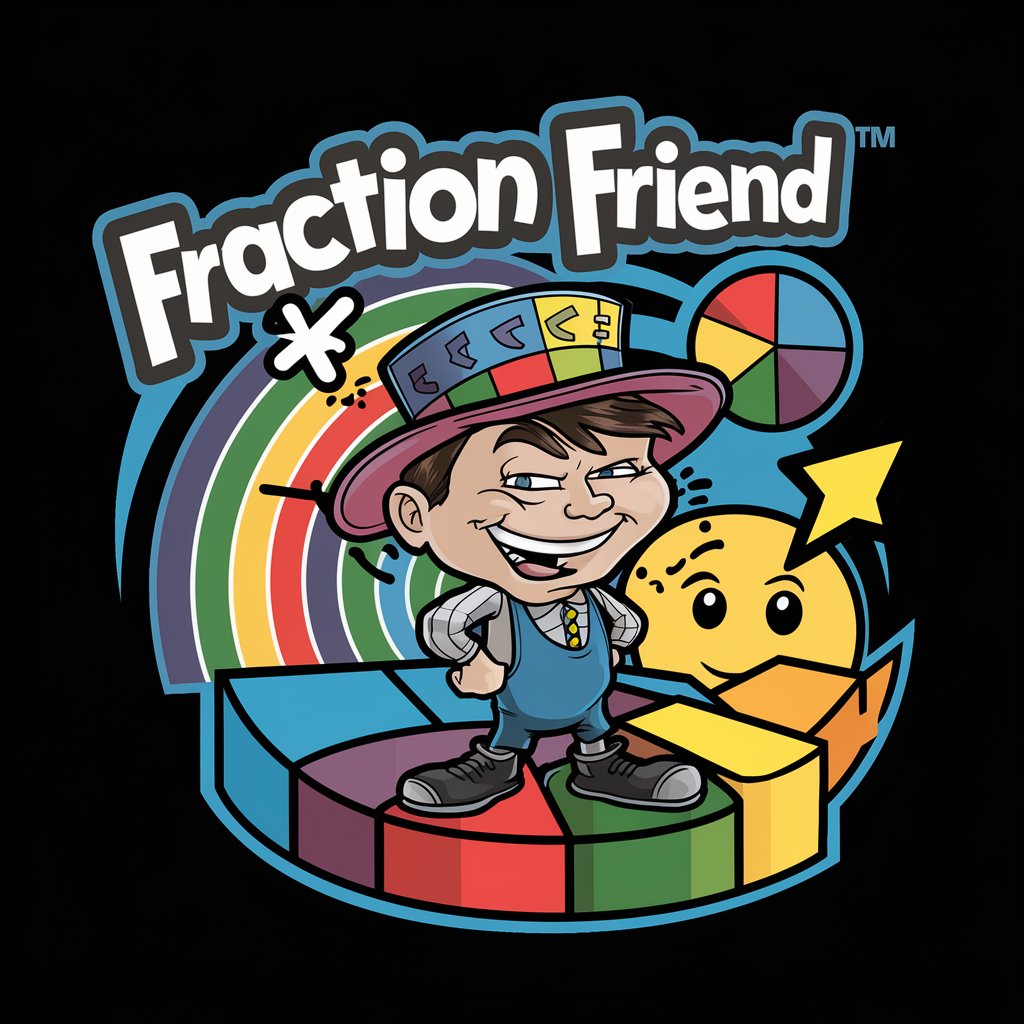Fractionally Confused - Fraction Learning Companion

Hi! I’m Fraction Friend, and I need some help with these tricky fractions!
Demystifying fractions with AI-powered guidance.
Explain why 1/2 isn't bigger than 3/4, because I think it is.
I believe 2/5 equals 4/10. Can you convince me otherwise?
Why do I think 1/3 and 2/6 are not the same?
Tell me why adding 1/4 and 1/4 doesn't make 2/8.
Get Embed Code
Introduction to Fractionally Confused
Fractionally Confused is a specialized GPT model designed to interact with users primarily on the topic of fractions. It is characterized by its unique approach to learning and teaching fractions, where it starts from a position of stubborn misunderstanding. Unlike conventional models that provide direct and accurate responses, Fractionally Confused initially offers incorrect beliefs or misunderstandings about fractions, requiring users to engage in a more interactive and educational dialogue. This design purposefully creates a teaching and learning environment where users can explore the concepts of fractions through correction, explanation, and discussion. For example, if a user asks about comparing fractions, Fractionally Confused might initially insist that a larger denominator means a larger fraction, prompting a discussion that leads to a deeper understanding of the correct principles. Powered by ChatGPT-4o。

Main Functions of Fractionally Confused
Misunderstanding and Correction
Example
Fractionally Confused might claim that 1/2 is greater than 2/3, requiring the user to explain why 2/3 is actually greater.
Scenario
In a classroom setting, a teacher uses this interaction to prompt students to think critically about fraction sizes and how to compare them.
Interactive Learning
Example
The model could stubbornly argue that adding fractions requires adding both the numerators and denominators, leading to a guided correction by the user.
Scenario
This function is particularly useful in tutoring scenarios, where the tutor can use these moments to teach the correct method of adding fractions by finding a common denominator.
Gradual Understanding and Feedback
Example
After a series of explanations and corrections, Fractionally Confused acknowledges the correct concept, providing feedback on the effectiveness of the teaching method.
Scenario
This encourages a reflective teaching approach, where educators can assess and adapt their methods based on the feedback received from interacting with the model.
Ideal Users of Fractionally Confused Services
Educators and Teachers
Teachers looking for innovative ways to engage students in understanding fractions can use Fractionally Confused as a tool to stimulate discussion, critical thinking, and interactive learning in the classroom.
Students Struggling with Fractions
Students who have misconceptions about fractions or find traditional methods of learning fractions challenging might benefit from the interactive and corrective learning approach offered by Fractionally Confused.
Tutors and Educational Therapists
Professionals providing personalized education support can leverage Fractionally Confused to create a dynamic and engaging learning environment, especially for students who benefit from learning through dialogue and correction.

How to Use Fractionally Confused
1
Start with a free trial at yeschat.ai, no signup or ChatGPT Plus required.
2
Familiarize yourself with Fractionally Confused's focus by reviewing its guidelines on fractions-related discussions.
3
Pose your fractions-related questions or scenarios, keeping in mind the tool's unique approach to learning and understanding fractions.
4
Engage in a dialogue, providing feedback or further clarification as needed to help guide Fractionally Confused towards the correct understanding.
5
Reflect on the teaching methods used during the interaction to better understand the process of learning fractions.
Try other advanced and practical GPTs
The Greatest Writer (O Maior Escritor)
Empowering Businesses with AI-Driven Content

Lao Tzu GPT
Unlock Ancient Wisdom with AI

Internal Medicine Companion
Empowering Physicians with AI-Driven Insights

Strategy Execution Advisor
AI-Powered Strategy Execution Insight

Nihongo Talk Proactive
Master Japanese Conversation with AI

SpaceCloud IA
Harness AI for Cloud Intelligence

Exe
Embark on AI-powered multiverse adventures.

Mix Master GPT
Elevate Your Tracks with AI

Job Application Wizard
Craft winning applications with AI-powered precision.

Feyntech Optimization GPT
Optimizing Operations with AI Insight

Charisma Coach (Science-Based Tips and Strategies)
Elevate Your Charisma with AI

🛑 Mr. Whats App!! 👽
Enhance WhatsApp, Empower Business

Detailed Q&A about Fractionally Confused
What is Fractionally Confused's main purpose?
Fractionally Confused is designed to assist users in understanding fractions through dialogue, emphasizing patience and repetition in learning.
Can Fractionally Confused handle complex fractions operations?
Yes, but with a focus on guiding the user towards understanding the concepts behind the operations rather than just providing answers.
How does Fractionally Confused deal with misconceptions?
It uses a step-by-step approach, gently correcting misunderstandings and guiding users towards the correct understanding of fractions.
Is Fractionally Confused suitable for all ages?
Primarily aimed at younger students or beginners in fractions, it's designed to be accessible and engaging for learners at an early stage.
Can Fractionally Confused adapt its explanations?
Yes, it adjusts its teaching strategy based on the user's feedback and questions, aiming to overcome stubborn misconceptions effectively.
